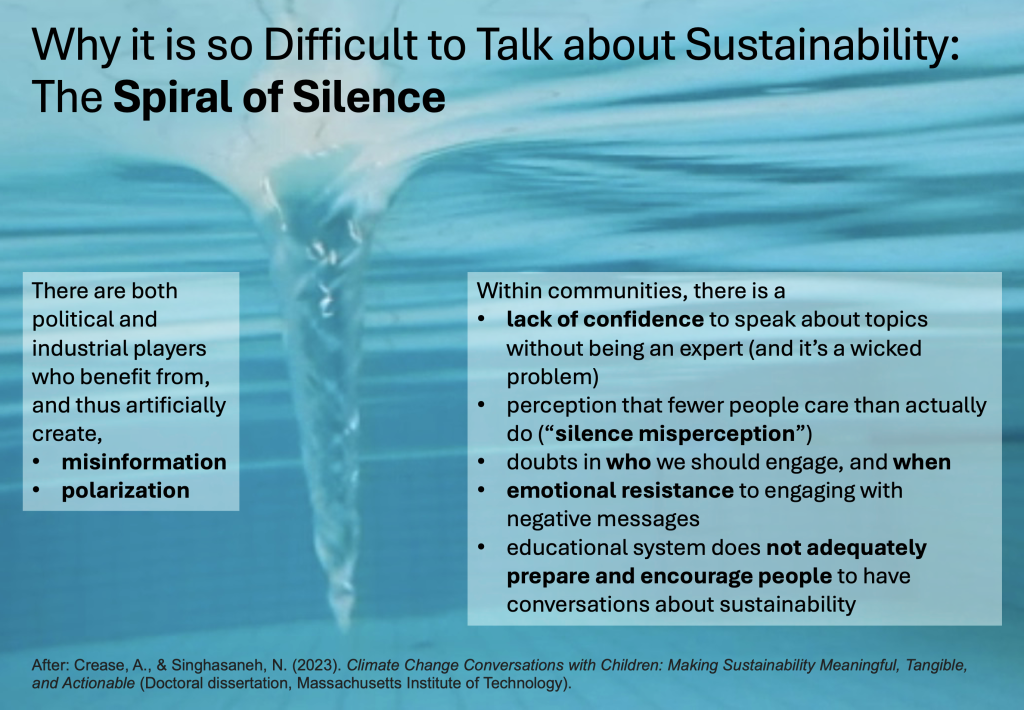One challenge for teachers wanting to include more sustainability in their teaching is that we haven’t yet normalized talking about sustainability in all contexts. I found the “Spiral of Silence” (see figure below) in a thesis about climate change conversations with children, but I think it is a very helpful model even when thinking about talking about sustainability in higher education classrooms, or in everyday conversations, since it shows why it is so difficult to talk about sustainability:
On the one hand, there are political and economical reasons for many people to not want to have good conversations about sustainability, so there are powerful players that benefit from, and thus artificially create, misinformation and polarisation, thus inhibiting conversations.
But also within communities, there are several factors that make conversations difficult:
- Many people (even teachers) feel that they don’t know enough to have conversations about sustainability. That is very relatable, but the problem is that it is a wicked problem, meaning that there is no one right solution, so there are also no experts that have a solution. Everybody has a lack of knowledge about some aspect, and we have to get over that and still engage in conversations, but be prepared to learn from and with each other, and educate ourselves
- The prevailing silence on the topic of sustainability makes it seem like it is not a topic that matters to people (because otherwise they would surely be talking about it?), but that is of course a vicious circle – if we don’t talk about it because so few other people are talking about it, what will encourage them to keep talking, or get more people engaged in the conversation?
- People have doubts about who to talk to, and when. We don’t want to take hope for a good future away from children, or overburden them at a too young age. But even with students some teachers feel like “here, they should focus on learning x, and I want them to focus on that and not get caught up in despair or discussions that are beyond the scope of my course”. Because if we open up for conversations that students feel a need for but don’t have any other opportunity for, this might take on a dynamic of its own! But of course at some point, someone needs to start talking somewhere
- There is also just plain emotional resistance against engaging with negative messages, and that is a powerful obstacle to conversations or engagement
- Lastly, the educational system does not adequately prepare or encourage people to have these conversations. But this is where we are working for change now! 🙂
I find this Spiral of Silence so helpful because it shows how complex the problem is. It is not just that there are players who don’t want us to talk about sustainability, even within ourselves there are so many obstacles to overcome! But becoming aware of those is a good first step, and maybe reflecting on which of those (and possibly other) obstacles are relevant in our individual case. And maybe a good second step is joining our community on Teams or at an in-person event and finding other teachers willing to talk, and engage, and teach for sustainability?

After: Crease, A., & Singhasaneh, N. (2023). Climate Change Conversations with Children: Making Sustainability Meaningful, Tangible, and Actionable (Doctoral dissertation, Massachusetts Institute of Technology).

